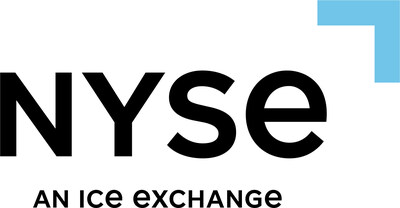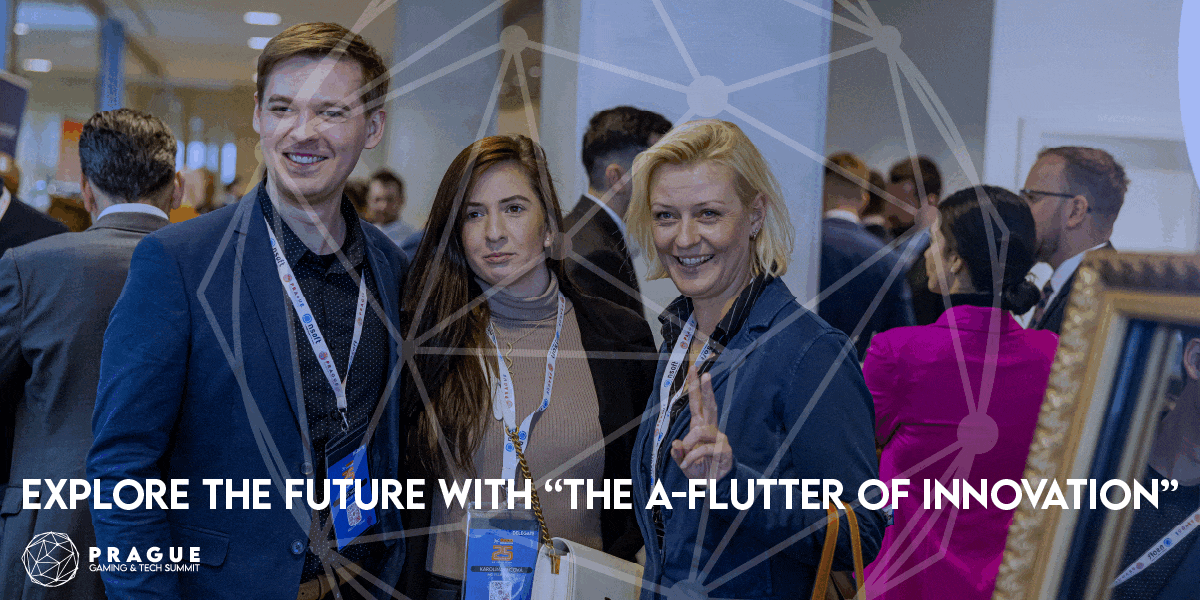Fintech PR
EY wins SAP® Pinnacle Awards for Partner of the Year in Technology Innovation and Strategic Growth

 Reading Time: 2 minutes
Reading Time: 2 minutes
EY announces that it has received two 2019 SAP Pinnacle Awards: ISV Partner of the Year in the Technology Innovation category, and Strategic Growth Partner of the Year.
EY has received these awards in recognition of the strength of its alliance and ecosystem relationship with SAP in delivering solutions that help solve business and technology challenges and help enable digital transformation. This is the sixth consecutive year that EY has been recognized by SAP with its Pinnacle Awards.
EY was also a finalist in two other categories: Public Cloud for SAP S/4HANA Partner of the Year and Integrated Delivery Partner of the Year.
Tim Fuller, EY Global SAP Go-to-Market Leader, says:
“I am proud of the collaborative approach of the EY and SAP alliance and the positive impact it has had on clients. By adopting a business-first view to address strategy, customer value, user experience, process, technology and operational impact, EY teams are well positioned to help clients address today’s challenges.”
The SAP Pinnacle Award program highlights top performing collaborators that have excelled in helping enterprises become best-run businesses. From more than 18,000 SAP collaborators worldwide, 24 were selected as winners in 30 categories, recognizing their commitment to value creation, exponential growth and simplification.
The Technology Innovation Award recognizes the independent software vendor that has created the most innovative services to help the customers succeed and innovate in their respective industries.
The Strategic Growth Partner of the Year Award is given to the SAP collaborator that has demonstrated significant growth across the globe, investment and innovation in strategic initiatives that support the digital core and the continued growth of cloud solutions including the SAP C/4HANA suite, intelligent technologies, and SAP Ariba and SAP SuccessFactors solutions.
Fuller says:
“We are honored to receive SAP Pinnacle Awards for the sixth consecutive year. These accolades are testament to the EY teams’ ability and commitment to innovate, transform and deliver with intelligence for clients.”
Award winners will be formally recognized at the SAP Global Partner Summit event being held in Orlando, Florida on 6 May. The event is for all SAP partners and takes place on the day prior to the SAPPHIRE NOW and ASUG Annual Conference, a global business technology event hosted by SAP and ASUG taking place 7-9 May 2019.
As part of the ongoing alliance with SAP, EY is a strategic sponsor at SAPPHIRE NOW, where it will bring the “Intelligence.Realized” theme to life via discussions about blockchain, the Internet of Things, digital transformation and more. To learn more about the EY and SAP alliance, visit https://www.ey.com/gl/en/about-us/our-alliances/ey-sap-alliance.
SOURCE EY
Fintech
Fintech Pulse: Your Daily Industry Brief – February 14, 2025: Pagaya Technologies, Morningstar, Ericsson & More

Introduction
In today’s fast‑paced world of financial technology, every headline is more than just a news item—it’s a glimpse into the future of banking, investment, and digital transformation. Welcome to Fintech Pulse: Your Daily Industry Brief, where we unpack the latest trends, partnerships, and technological breakthroughs shaping the industry. On this day, February 14, 2025, we delve into stories ranging from a significant revenue jump by Pagaya Technologies to groundbreaking collaborations involving Ericsson, Morningstar, and other industry pioneers. Our op‑ed‑style analysis is designed to not only inform but also provide critical insights into how these developments are set to redefine financial services for consumers and enterprises alike.
The fintech landscape has been evolving at breakneck speed over the past few years, and today’s stories highlight a common theme: innovation driving growth. With artificial intelligence, cybersecurity, and digital partnerships at the forefront, the industry is experiencing transformative changes that are changing the way financial institutions operate, and how customers interact with their money. In this article, we break down the nuances of each headline, evaluate the broader industry implications, and offer a perspective on what these developments might mean for the future of fintech.
Let’s start with a closer look at Pagaya Technologies, whose impressive revenue performance signals both internal strategic excellence and a broader trend in fintech growth.
Pagaya Technologies’ Revenue Surge: A Beacon for Fintech Innovation
Pagaya Technologies has captured the attention of investors and industry experts alike, following news that its revenue surged by 28% in the last quarter. This impressive leap not only underscores the company’s robust business model but also serves as a clear indicator of the broader momentum within the fintech sector.
The Significance of the Revenue Jump
Pagaya’s 28% revenue increase is far from an isolated financial metric—it’s emblematic of a larger wave of digital disruption. In an era where traditional banks are being upended by innovative fintech startups, Pagaya’s performance offers a glimpse into how leveraging data analytics, machine learning, and sophisticated risk‑assessment models can drive substantial growth. As investors search for companies with the agility to adapt to rapidly changing market conditions, Pagaya stands out as a prime example of success fueled by cutting‑edge technology and agile management practices.
Beyond the headline figure, the revenue surge reflects the company’s ability to innovate in an increasingly competitive environment. Fintech firms are now more than ever expected to blend financial expertise with technological prowess. In Pagaya’s case, the growth is a testament to its strategic emphasis on data‑driven decision‑making and operational efficiency—a model that many traditional financial institutions are scrambling to emulate.
Strategic Implications and Market Positioning
From an operational standpoint, the revenue jump has several implications. First, it demonstrates that fintech companies are capable of scaling operations quickly while maintaining robust profit margins. For Pagaya, this performance may signal the success of targeted customer acquisition strategies and optimized product offerings designed to meet the evolving needs of digitally savvy consumers.
Moreover, such strong financial performance reinforces investor confidence, creating a positive feedback loop that may spur further capital inflows. This, in turn, enables additional investments in research and development, ensuring that Pagaya remains at the forefront of innovation in an industry characterized by rapid technological change. For competitors and market analysts alike, this development is a call to revisit traditional models and embrace digital transformation strategies.
Challenges and Future Outlook
While the 28% revenue increase is an undeniably positive sign, it is not without its challenges. Rapid growth can bring issues of scalability, regulatory scrutiny, and heightened competition. In particular, as more fintech companies aim to replicate Pagaya’s success, market saturation could become a real concern. However, the company’s commitment to innovation and operational excellence suggests that it is well‑positioned to tackle these hurdles head‑on.
Looking ahead, the sustainability of this growth will depend on Pagaya’s ability to continuously innovate and adapt to shifting market dynamics. With increasing demand for digital financial services, companies like Pagaya are expected to invest heavily in technologies that enhance customer experience while ensuring compliance with evolving regulatory frameworks. If successful, such investments could help secure long‑term profitability and set new benchmarks for fintech performance.
Source: The Motley Fool
Cybersecurity and GenAI: The Convergence Shaping Financial Services
In parallel with growth stories like Pagaya’s, another transformative trend is emerging at the intersection of cybersecurity and artificial intelligence. Recent developments highlight how GenAI (Generative Artificial Intelligence) is being implemented in financial services to fortify IT security frameworks. This convergence is more than a technological upgrade—it’s a strategic imperative in an age where cyber‑threats are evolving as quickly as the innovations designed to stop them.
The Growing Importance of Cybersecurity in Fintech
As fintech companies increasingly rely on digital infrastructures, the security of these systems becomes paramount. Cyber‑attacks are no longer just a risk to traditional banking—they pose a significant threat to any institution that manages sensitive financial data. In this context, the integration of GenAI into cybersecurity protocols represents a proactive approach to safeguarding information assets and maintaining customer trust.
GenAI offers a dynamic method for detecting and responding to security breaches in real‑time. By analyzing patterns and identifying anomalies faster than traditional systems, AI‑driven cybersecurity solutions can preemptively counteract potential threats. This is particularly crucial in the financial services sector, where a single breach can compromise millions of dollars and jeopardize customer confidence.
How GenAI is Transforming Security Practices
The implementation of GenAI in financial services is enabling organizations to move from reactive security measures to proactive defenses. AI algorithms are now capable of processing vast amounts of data to identify suspicious activities before they escalate into full‑blown breaches. This shift is revolutionizing the way banks and fintech companies approach risk management.
Moreover, the technology’s predictive capabilities are helping organizations to anticipate emerging threats. By continuously learning from new data inputs, GenAI systems can adapt to novel attack vectors and devise countermeasures in real‑time. This dynamic learning process is essential in an environment where cyber‑criminals are constantly devising innovative strategies to exploit vulnerabilities.
Strategic Considerations and Industry Impact
For financial institutions, the strategic adoption of GenAI isn’t just about defense—it’s also about competitive advantage. Companies that invest in these technologies signal to the market that they are committed to protecting their customers’ assets and sensitive information. This, in turn, can enhance brand reputation and attract a more security‑conscious clientele.
From a broader industry perspective, the integration of GenAI into cybersecurity frameworks is poised to become a standard practice. As regulatory bodies increasingly emphasize data protection and risk management, fintech companies that fail to adopt advanced security measures may find themselves at a competitive disadvantage. The convergence of AI and cybersecurity, therefore, is not only a technical evolution—it’s a strategic necessity for survival and growth in the modern digital economy.
Source: Fintech News
Morningstar’s Fintech Partnership with SSC: Charting a New Course in Data and Analytics
In another significant development, Morningstar has announced a strategic partnership with SSC, a move that underscores the growing importance of collaboration between traditional financial institutions and fintech innovators. This partnership is designed to leverage Morningstar’s deep expertise in data analytics and SSC’s technological prowess to deliver enhanced insights and services to the market.
The Strategic Rationale Behind the Partnership
At its core, the collaboration between Morningstar and SSC represents a fusion of data‑driven insights with cutting‑edge fintech solutions. For Morningstar, a company renowned for its comprehensive financial data and analytics, partnering with SSC opens up new avenues for innovation. The alliance is expected to lead to the development of more sophisticated tools that can better serve investors, analysts, and financial advisors.
This partnership is particularly timely, as the financial services industry grapples with the dual challenges of data overload and the need for actionable intelligence. By integrating SSC’s advanced technological solutions with Morningstar’s robust data infrastructure, the new initiative aims to streamline data processing and improve the accuracy of financial forecasting. The result is expected to be a more agile, responsive, and insightful approach to investment management.
Impact on the Financial Ecosystem
The benefits of the Morningstar‑SSC partnership extend beyond the immediate scope of data analytics. In today’s competitive landscape, access to real‑time, high‑quality data is a key differentiator for financial institutions. By enhancing its analytical capabilities, Morningstar is positioning itself as a leader in the fintech space, capable of delivering more value to its customers and staying ahead of industry trends.
Moreover, the collaboration is likely to foster a culture of innovation across the sector. As traditional financial institutions embrace partnerships with tech firms, the industry is set to experience a wave of creative solutions that address longstanding challenges such as market volatility, risk management, and regulatory compliance. This shift towards collaborative innovation is essential for the continued evolution of financial services, ensuring that institutions remain resilient and competitive in a rapidly changing market.
Looking Ahead: Opportunities and Challenges
While the Morningstar‑SSC partnership holds immense promise, it also comes with its share of challenges. Integrating disparate systems and aligning strategic priorities across organizations can be complex. However, if managed effectively, the benefits far outweigh the risks. Enhanced data analytics can lead to better investment strategies, improved customer experiences, and ultimately, higher returns for investors.
In an era where the line between finance and technology is increasingly blurred, collaborations like this one are paving the way for a new era of data‑driven decision‑making. As the industry continues to evolve, the ability to harness vast troves of data in real‑time will be a critical factor in determining which firms emerge as true innovators and market leaders.
Source: Investment News
Ericsson and IIT Delhi: Collaborative Research in Mobile Financial Services
In another exciting development within the fintech ecosystem, Ericsson has teamed up with IIT Delhi to drive research into mobile financial services. This collaboration represents a forward‑thinking initiative that seeks to merge telecommunications expertise with financial innovation—an alliance that promises to accelerate the evolution of mobile banking and digital payments.
The Role of Collaboration in Driving Innovation
Ericsson’s partnership with one of India’s premier technological institutes highlights the growing recognition that innovation in fintech often springs from cross‑sector collaboration. Mobile financial services are rapidly becoming the backbone of digital economies worldwide, and research initiatives like this one are critical to overcoming the challenges of scalability, security, and user adoption.
By combining Ericsson’s global telecommunications leadership with the academic rigor and research capabilities of IIT Delhi, the collaboration is set to explore new frontiers in mobile connectivity, secure transactions, and user interface design. The ultimate goal is to create a robust framework that not only improves the accessibility and efficiency of mobile banking services but also ensures that these services remain secure and resilient in the face of emerging cyber threats.
Implications for Mobile Financial Services
The implications of this partnership are far‑reaching. For consumers, enhanced mobile financial services mean more reliable, secure, and user‑friendly access to banking and payment solutions. For financial institutions, it represents an opportunity to tap into innovative research that could drive cost savings, improve service delivery, and foster a more inclusive financial ecosystem.
Furthermore, as mobile connectivity becomes increasingly central to everyday life, initiatives that enhance the infrastructure and security of mobile financial services will play a crucial role in bridging the digital divide. By making banking more accessible to remote and underserved populations, Ericsson and IIT Delhi’s research could contribute significantly to financial inclusion—a key goal for many emerging economies.
Research Focus and Future Prospects
While the specifics of the research agenda are still emerging, early indicators suggest that the collaboration will focus on several critical areas. These include next‑generation authentication protocols, advanced encryption methods, and the integration of emerging technologies like 5G and edge computing into mobile financial platforms. Such innovations are poised to revolutionize the user experience, making mobile transactions not only faster but also safer.
The success of this initiative could set a precedent for similar collaborations worldwide, demonstrating that academia and industry working in tandem can yield breakthroughs that benefit the entire financial services ecosystem. As the research progresses, it will be interesting to see how these innovations are adopted and scaled across different markets, potentially reshaping the future of digital banking.
Source: The Fast Mode
Mapping the Future: Neobanks, BNPL, and Retail Fintech Trends in 2024
A comprehensive market map published by PitchBook has shed light on the dynamic and rapidly evolving world of neobanks, Buy-Now-Pay-Later (BNPL) solutions, and retail fintech. This analysis provides a valuable snapshot of the current competitive landscape, revealing both opportunities and challenges that lie ahead for companies operating in these domains.
The Rise of Neobanks and Digital-First Solutions
Neobanks have emerged as disruptors in an industry once dominated by traditional brick‑and‑mortar institutions. By offering a completely digital banking experience, these institutions have managed to capture the attention of tech‑savvy consumers seeking convenience, transparency, and lower fees. The PitchBook market map indicates that neobanks are not only growing in number but are also expanding their service offerings to include everything from personal finance management to small business loans.
The data suggests that neobanks are poised to play a pivotal role in the future of banking. Their ability to operate without the overhead of physical branches enables them to offer competitive pricing and innovative product features that appeal to a broad spectrum of customers. For investors, the rapid expansion of neobanks represents an opportunity to back companies that are at the forefront of digital transformation in financial services.
BNPL: A Paradigm Shift in Consumer Financing
The Buy-Now-Pay-Later model is another trend that is reshaping consumer finance. BNPL services allow consumers to make purchases immediately while deferring payment, typically without incurring interest—provided payments are made on time. This model has gained popularity, especially among younger consumers who prefer flexible payment options and a seamless online shopping experience.
PitchBook’s analysis reveals that BNPL providers are rapidly scaling up their operations, fueled by rising consumer demand and the growing acceptance of alternative credit models. However, this growth is not without risks. Regulatory scrutiny, concerns over consumer debt, and the sustainability of interest-free models remain important issues for industry stakeholders. Nonetheless, BNPL remains one of the most exciting frontiers in retail fintech, with the potential to fundamentally alter how consumers finance everyday purchases.
Retail Fintech: Integrating Technology and Traditional Commerce
Beyond neobanks and BNPL, retail fintech is an umbrella term that covers a wide range of innovations designed to enhance the shopping and payment experience. From digital wallets to contactless payment solutions, retail fintech is enabling a smoother, more integrated customer journey. The market map underscores how companies in this space are leveraging technologies such as blockchain, artificial intelligence, and big data analytics to deliver more personalized and secure retail experiences.
For traditional retailers, the challenge is clear: adapt to the rapidly changing digital landscape or risk obsolescence. The insights from PitchBook suggest that partnerships between technology providers and established retail brands will become increasingly common as companies seek to combine the reliability of traditional commerce with the agility of fintech innovation. This convergence is likely to lead to the emergence of hybrid models that offer the best of both worlds—robust security and cutting‑edge customer service.
Source: PitchBook
Fintech Magazine Partners with the Swiss Fintech Association: Fostering Industry Collaboration
In an inspiring display of industry solidarity, Fintech Magazine has joined forces with the Swiss Fintech Association. This partnership is emblematic of the collaborative spirit that is beginning to define the fintech sector. By uniting a leading publication with a key industry body, the alliance aims to promote thought leadership, facilitate knowledge exchange, and drive the adoption of innovative practices across Europe and beyond.
The Strategic Value of Collaboration
In today’s interconnected world, no single entity can claim a monopoly on innovation. The partnership between Fintech Magazine and the Swiss Fintech Association is a testament to the belief that collaboration is essential for overcoming industry challenges and seizing new opportunities. Together, they aim to create platforms for discussion, education, and collaboration that will help shape the future of financial technology.
For members of the Swiss Fintech Association, this alliance provides a unique opportunity to gain exposure to the latest trends and insights through a reputable and widely circulated publication. For Fintech Magazine, partnering with an influential industry body lends additional credibility and opens doors to exclusive content and interviews with key industry players. In essence, this collaboration is a win‑win, creating a knowledge network that benefits the entire fintech community.
Driving Innovation and Best Practices
By facilitating regular exchanges between industry experts, academic researchers, and technology providers, the partnership is expected to foster an environment of continuous improvement and innovation. Topics such as regulatory compliance, cybersecurity, and customer experience are likely to be at the forefront of their collaborative efforts. In an industry that is constantly evolving, staying informed and connected is crucial for maintaining a competitive edge.
This initiative is also significant from a regulatory perspective. As fintech companies grapple with increasingly complex legal frameworks, having a dedicated forum for dialogue and best practices can help streamline compliance and encourage a more proactive approach to regulation. Ultimately, the partnership could serve as a model for similar collaborations around the world, setting new benchmarks for how industry associations and media outlets can work together to drive positive change.
Source: Fintech Magazine
Conclusion
Today’s fintech landscape is a tapestry woven from the threads of innovation, strategic partnerships, and transformative technology. The stories we’ve explored—from Pagaya Technologies’ remarkable revenue surge to the strategic alliances forged by Morningstar, Ericsson, and Fintech Magazine—offer a vivid snapshot of an industry in the midst of profound change.
Pagaya Technologies is a prime example of how data‑driven strategies and agile operations can yield extraordinary financial performance. Their 28% revenue jump is not merely a statistic; it’s a signal to the entire industry that fintech companies can—and must—innovate to thrive. This growth, driven by sophisticated risk‑assessment and customer‑centric models, sets a benchmark for others to follow.
The convergence of cybersecurity and GenAI is another transformative trend. In an era where cyber‑threats are ever‑present, leveraging generative AI to anticipate and neutralize risks is both a defensive necessity and a competitive advantage. Financial institutions that invest in these technologies will not only protect their data but also position themselves as leaders in the next wave of digital transformation.
The strategic collaboration between Morningstar and SSC further highlights the importance of partnerships in today’s fintech ecosystem. By merging robust data analytics with advanced technological solutions, this alliance is poised to deliver new insights that will redefine investment strategies and enhance customer experiences. In a world awash with data, the ability to extract meaningful insights quickly is the key to staying ahead of market trends.
Equally inspiring is the research collaboration between Ericsson and IIT Delhi. This initiative underscores the critical role of academia‑industry partnerships in advancing mobile financial services. As mobile banking becomes an indispensable part of everyday life, innovations in connectivity and security will drive financial inclusion and elevate user experiences globally.
The market map detailing trends in neobanks, BNPL, and retail fintech paints a picture of an industry that is both vibrant and rapidly evolving. Neobanks are rewriting the rules of traditional banking with their digital‑first approach, while BNPL solutions are reshaping consumer finance by offering unprecedented flexibility. Retail fintech, with its emphasis on personalization and integration, is set to revolutionize the shopping experience, bridging the gap between traditional commerce and digital innovation.
Finally, the partnership between Fintech Magazine and the Swiss Fintech Association represents the spirit of collaboration that is increasingly defining the sector. In an environment where the challenges of regulation, cybersecurity, and market competition are more pronounced than ever, forging alliances that promote knowledge exchange and industry best practices is not just beneficial—it’s essential.
In our view, these stories collectively signal a new era for fintech. The industry is moving beyond isolated innovations and embracing an ecosystem approach where collaboration, data, and technology converge to create a more secure, efficient, and inclusive financial landscape. The transformative changes we’re witnessing today are laying the groundwork for tomorrow’s financial services—a future where agility, resilience, and continuous innovation are the norm.
As we reflect on these developments, it becomes clear that the future of fintech is not a distant horizon but a present reality. With every revenue report, every strategic partnership, and every groundbreaking research initiative, the industry takes another step toward a more dynamic and interconnected world of finance. For investors, regulators, and consumers alike, the message is clear: adaptation and collaboration are the keys to success in this ever‑evolving landscape.
Looking ahead, we anticipate further convergence between technology and finance—an ongoing journey marked by innovation, risk, and immense opportunity. In such a dynamic environment, staying informed is paramount. We hope that today’s briefing has not only provided you with critical insights but also sparked ideas about how you might navigate and capitalize on the trends shaping the future of financial technology.
Thank you for joining us for this deep‑dive into the most important stories of the day. As fintech continues to evolve, so too will our commitment to bringing you the insights and analysis you need to stay ahead in a rapidly changing world. Until tomorrow, keep your finger on the pulse of fintech and embrace the future of finance with confidence and curiosity.
The post Fintech Pulse: Your Daily Industry Brief – February 14, 2025: Pagaya Technologies, Morningstar, Ericsson & More appeared first on News, Events, Advertising Options.
Fintech PR
Binance Survey Reveals Most Crypto Investors Take a Long-Term Approach to Both Money and Love

New data challenges the stereotype of high-risk crypto traders and explores how they make decisions, navigate trade-offs, and view financial compatibility in relationships
DUBAI, UAE, Feb. 14, 2025 /PRNewswire/ — A new survey from Binance, the global blockchain ecosystem behind the world’s largest cryptocurrency exchange by trading volume and users, suggests that most crypto investors take a long-term approach to both investing and romantic relationships. Nearly half of the respondents (49%) consider themselves “Forever HODLers,” meaning they invest in both money and love for the long haul. This and other insights were uncovered through a global survey conducted by Binance on the eve of Valentine’s Day, which polled 2,200 crypto users on how they navigate financial decisions and romantic commitments.
However, many take a different approach, blending long-term thinking in one area with flexibility in the other or staying adaptable in both:
- 19% embrace the “Trader & Romantic” mindset, taking high risks in crypto but opting for stability in love.
- 17% follow the “Investor & Free Spirit” approach, playing the long game in finance while keeping relationships flexible.
- 14% fall into the “Risk Chaser” category, keeping their options open in both investing and love.
“These findings challenge the common perception of crypto investors as impulsive risk-takers. In reality, most apply the same careful, long-term approach to both their portfolios and their personal lives. Just as building a strong financial future requires patience and strategic planning, so too does cultivating lasting relationships,” said Andy Goldin, Head of Data Analytics at Binance. “There’s no single formula for success – some prioritize stability in both areas, while others embrace risk in one and caution in the other. Ultimately, it’s about finding the right strategy that works for them.”
Beyond commitment styles, the survey sheds light on how crypto investors make decisions and balance priorities in both finance and relationships. One in three (34%) apply strategy and logic to both love and money, while the rest are divided between trusting emotions in both or mixing risk-taking in one area with stability in the other.
When it comes to priorities, crypto and relationships both demand trade-offs. While a third (32%) continue investing in crypto without making lifestyle sacrifices, 42% adjust their spending – whether by delaying big purchases like a home or car, cutting back on shopping, or reducing travel expenses – to prioritize their financial goals. Similarly, relationships come with their own compromises. While 29% say they don’t put anything on hold for love, others (58%) prioritize love by dedicating more time to their partners, scaling back social outings, or even adjusting financial habits to accommodate their relationships.
Financial compatibility also plays a crucial role in romance, with 59% of respondents emphasizing that shared financial values are key to building long-term relationships. “As crypto becomes an increasingly integral part of everyday life, more people are eager to learn about digital assets. Last year alone, 44 million users visited Binance Academy to expand their crypto knowledge,” said Goldin. “These new survey findings suggest that as financial literacy in crypto grows, it may also contribute to stronger financial alignment in relationships, helping couples navigate money matters with greater confidence and shared understanding.”
Binance Academy offers a wide range of free online courses and resources to help anyone, from beginners to experienced investors, expand their crypto knowledge.
About the survey
The survey was conducted from February 6th to 10th, 2025 on the Binance Survey platform, and was open to both Binance users and non-users. A total of 2,200 participants from around the world took part in the study.
About Binance
Binance is a leading global blockchain ecosystem behind the world’s largest cryptocurrency exchange by trading volume and registered users. Binance is trusted by more than 250 million people in 100+ countries for its industry-leading security, transparency, trading engine speed, protections for investors, and unmatched portfolio of digital asset products and offerings from trading and finance to education, research, social good, payments, institutional services, and Web3 features. Binance is devoted to building an inclusive crypto ecosystem to increase the freedom of money and financial access for people around the world with crypto as the fundamental means. For more information, visit: https://www.binance.com

Photo – https://mma.prnewswire.com/media/2620291/Binance_Survey_Reveals_Most_Crypto_Investors_Take_a_Long_Term_Approach.jpg
Logo – https://mma.prnewswire.com/media/1773650/Binance_Logo_Yellow_4x_Logo.jpg
![]() View original content:https://www.prnewswire.co.uk/news-releases/binance-survey-reveals-most-crypto-investors-take-a-long-term-approach-to-both-money-and-love-302376938.html
View original content:https://www.prnewswire.co.uk/news-releases/binance-survey-reveals-most-crypto-investors-take-a-long-term-approach-to-both-money-and-love-302376938.html

Fintech PR
NYSE CONTENT ADVISORY: PRE-MARKET UPDATE FOR FEBRUARY 14th + KARMAN POPS DOUBLE DIGIT IPO
NEW YORK, Feb. 14, 2025 /PRNewswire/ — The New York Stock Exchange (NYSE) is proud to offer a daily pre-market update directly from the NYSE Trading Floor. Access today’s NYSE Pre-market update for market insights before trading begins.
Kristen Scholer delivers the pre-market update on February 14th
- Karman Holdings (NYSE: KRMN) sees stock jump in NYSE debut
- Stocks gain as President Trump holds off on new tariffs Thursday
- Nvidia rose and inflation worries eased after data release
Watch NYSE TV Live every weekday 9:00-10:00am ET

Video – https://mma.prnewswire.com/media/2620562/NYSE_Feb_14_Market_Update.mp4
Logo – https://mma.prnewswire.com/media/2581322/New_York_Stock_Exchange_Logo.jpg
![]() View original content:https://www.prnewswire.co.uk/news-releases/nyse-content-advisory-pre-market-update-for-february-14th–karman-pops-double-digit-ipo-302377106.html
View original content:https://www.prnewswire.co.uk/news-releases/nyse-content-advisory-pre-market-update-for-february-14th–karman-pops-double-digit-ipo-302377106.html

-

 Fintech6 days ago
Fintech6 days agoFintech Pulse: Your Daily Industry Brief – February 7, 2025: (Lendscape, Paysafe, PayPal, Trump Media, Fintech Ramp, Forbes Tate Partners)
-

 Fintech4 days ago
Fintech4 days agoFintech Pulse: Your Daily Industry Brief – February 10, 2025: (Carbon Underwriting, Agentic AI & Fintech Innovator)
-

 Fintech PR7 days ago
Fintech PR7 days agoKeymed Biosciences Announces Approval of Stapokibart For the Treatment of Seasonal Allergic Rhinitis
-

 Fintech PR6 days ago
Fintech PR6 days agoAction plan 8.0 to inject more vitality into Shanghai
-

 Fintech3 days ago
Fintech3 days agoFintech Pulse: Your Daily Industry Brief – February 10, 2025: (Wise, Fintech Rebloom, & BNPL Innovator)
-

 Fintech3 days ago
Fintech3 days agoDatalign Secures $9M Seed Funding to Accelerate AI-Powered Financial Advisory Solutions
-

 Fintech2 days ago
Fintech2 days agoFintech Pulse: Your Daily Industry Brief – Feb 12, 2025: Tabby, Fenergo, PwC, Rebloom, Ant International, eToro
-

 Fintech PR4 days ago
Fintech PR4 days agoLithium Africa Resources Corp. Announces $6M Equity Financing and Intention to Complete a Listing on a Canadian Stock Exchange
















